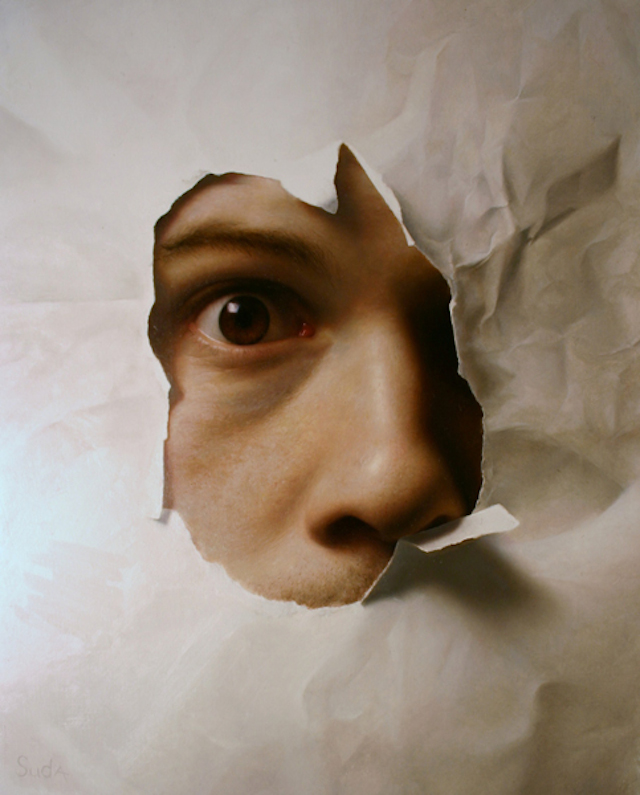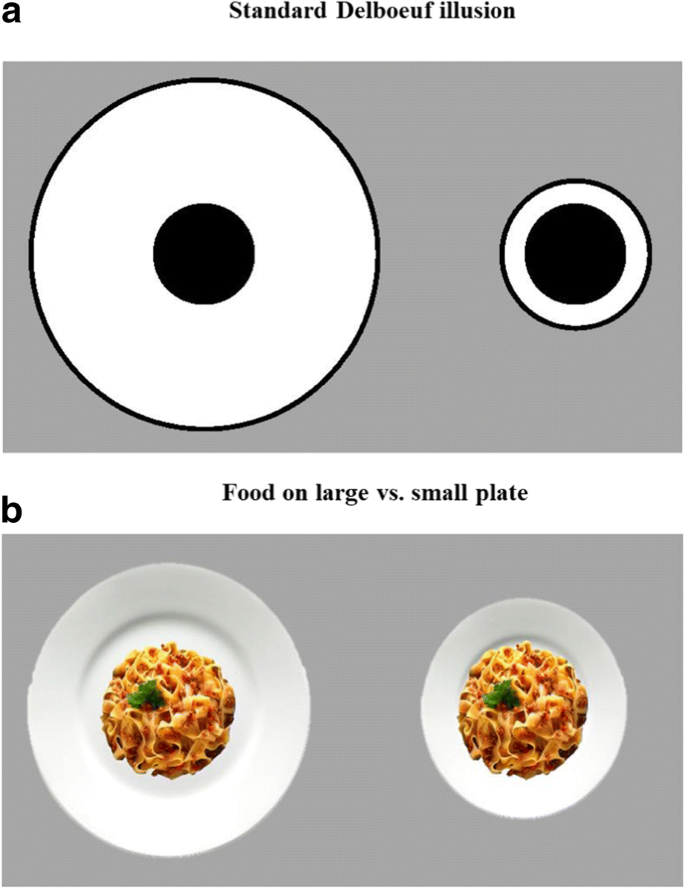
NPR’s sites use cookies, similar tracking and storage technologies, and information about the device you use to access our sites (together, “cookies”) to enhance your viewing, listening and user experience, personalize content, personalize messages from NPR’s sponsors, provide social media features, and analyze NPR’s traffic. This information is shared with social media, sponsorship, analytics, and other vendors or service providers. See details.


- This is an example of the Delboeuf illusion, first identified by Belgian philosopher and mathematician Joseph Delbouef in 1887 or 1888. Modern psychologists have tested this illusion in various experiments, including one to determine if eyeshadow makes eyes look bigger (it does), and others to determine if the quantity of food on a plate looks.
- A new study by Dr. Brian Wansink and Dr. Koert van Ittersum indicates that it does - or more specifically, that the color contrast between food and plate creates an optical illusion known as the Delboeuf illusion. Named after the Belgian scientist who discovered it in 1865.
- To minimize the Delboeuf illusion, serve food on plates with a contrasting color to the food you plan to serve at a meal. The authors also found the background colors, such as the color of the table, the tablecloth, or placemats, also help in eating smaller portions. A tablecloth with a low contrast to the dishes can minimize the effect of the.
Delboeuf Illusion And Food Stamps
You may click on “Your Choices” below to learn about and use cookie management tools to limit use of cookies when you visit NPR’s sites. You can adjust your cookie choices in those tools at any time. If you click “Agree and Continue” below, you acknowledge that your cookie choices in those tools will be respected and that you otherwise agree to the use of cookies on NPR’s sites.
Delboeuf Illusion And Food And Drink
The Delboeuf Illusion has been proven to work for a wide range of shapes, including squares, rectangles, and triangles. In other words, it doesn’t matter what you’re eating, your mind will still play tricks on you when it comes to the relative size perception of your portion and your plate. Sep 12, 2019 The idea is based on something called the Delboeuf Illusion, which claims that using a smaller plate will not only help to serve less food, but the portion will actually appear larger and more filling. In turn, you will feel like you’ve eaten a lot while actually eating less.